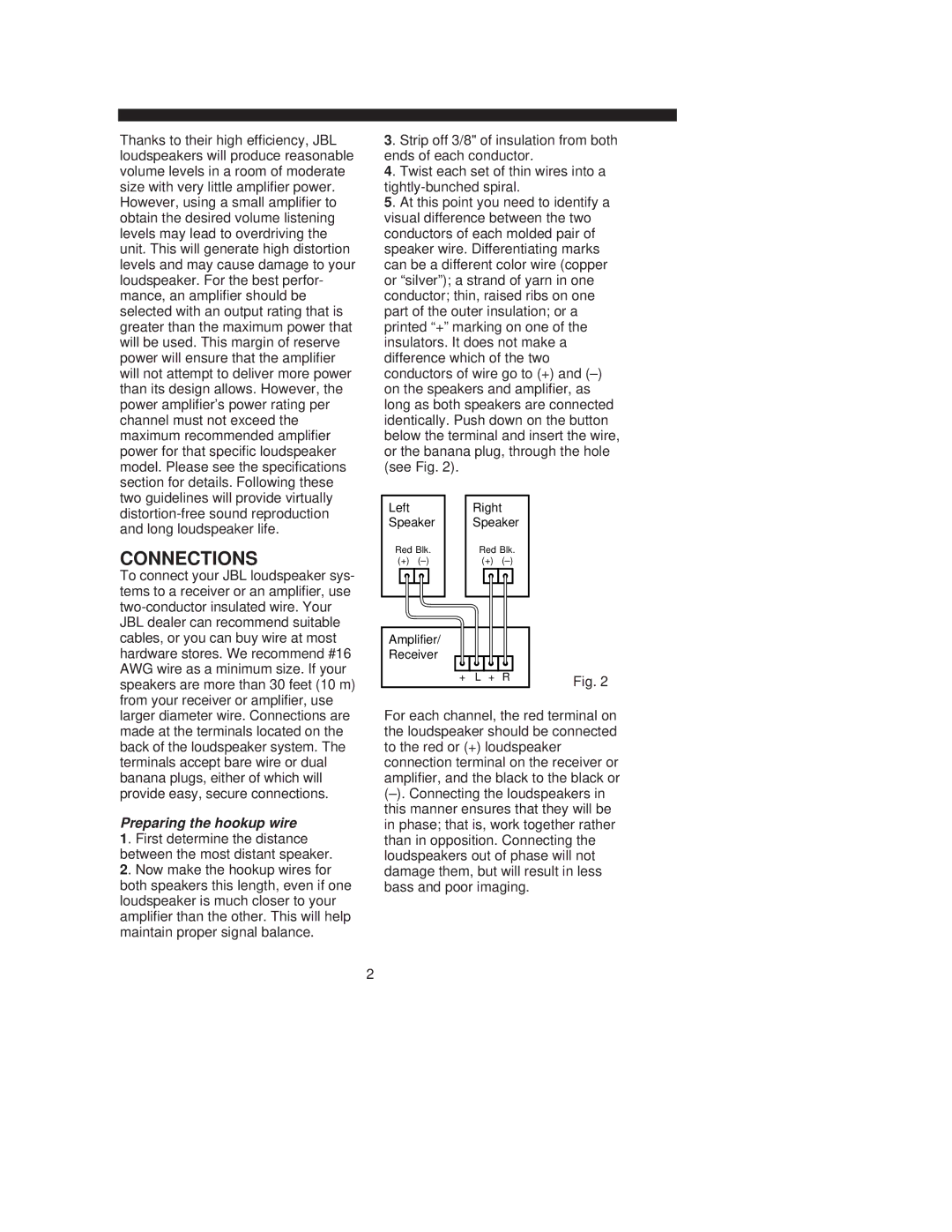G Series specifications
The JBL G Series is a remarkable line of loudspeakers that brings together advanced audio engineering and stunning design. Primarily aimed at professional audio applications, this series is known for its clarity and robust performance across various sound environments, including live performances, events, and indoor venues.One of the standout features of the JBL G Series is its high-efficiency drivers. Engineered to produce exceptional sound output while minimizing power consumption, these drivers ensure that users can enjoy high-quality audio without the need for excessive amplification. The series typically includes both woofers and tweeters designed with JBL’s signature technology to deliver balanced sound across the frequency spectrum.
A defining characteristic of the G Series is its advanced waveguide technology. This innovation allows for better control of the sound dispersion pattern, which means that listeners positioned throughout an area can experience consistent sound quality. The carefully designed waveguide enhances intelligibility and ensures that vocals and instruments are clear, making it an ideal choice for both music and speech applications.
The JBL G Series also emphasizes rugged construction. Built to withstand the rigors of touring and repeated use, these speakers feature durable materials that protect against impacts and environmental hazards. The cabinets often incorporate premium finishes that not only enhance their aesthetic appeal but also contribute to their robustness.
Another technology that sets the G Series apart is its sophisticated crossover networks. These networks are crucial for managing how audio signals are distributed among the different drivers. JBL engineers meticulously design these crossovers to ensure seamless integration between components, resulting in a cohesive and dynamic sound reproduction.
Connectivity options in the G Series are also user-friendly, offering a range of inputs and outputs that cater to various setups. Whether you're connecting via XLR, TRS or other formats, the versatility in connectivity ensures compatibility with a wide range of audio equipment.
In summary, the JBL G Series stands out for its efficient performance, innovative sound dispersion technologies, durable build quality, and user-friendly connectivity options. These characteristics make it a preferred choice for professionals who demand excellence in live sound environments and a premium listening experience. As part of JBL's legacy of excellence, the G Series is poised to meet and exceed the expectations of audio professionals and enthusiasts alike.

